A World at Risk: An Imperative for a Paradigm Shift to Cultivate 21st Century Learners[1]
*Published in Society 52(2), pp 129-135, April 2015, a special issue of the journal commemorating the 30th anniversary of A Nation at Risk. This is the submitted version. For the final published version please visit: http://link.springer.com/article/10.1007/s12115-015-9872-8
**In recognition of its significance and influence, I purposefully chose to emulate the style and language of A Nation at Risk in this paper.
“Our Nation is at risk. Our once unchallenged preeminence in commerce, industry, science, and technological innovation is being overtaken by competitors throughout the world” (National Commission on Excellence in Education, 1983, p. 1). The bedrock of American prosperity, the massive middle class, has been shrinking. The economy that once created the American middle class has been going through a hollowing-out process (Wohlsen, 2012). Traditional middle-class jobs have been disappearing quickly, offshored to other countries or replaced by machines (Brynjolfsson & McAfee, 2012) (Goldin & Katz, 2008; McAfee, 2012). The U.S. economy is growing–companies are making record profits and investing, and new businesses are created every day. That growth, however, is creating jobs at the very top and the very bottom (Aspen Institute, 2012), hence the fast growth of rewarding opportunities for the creative and entrepreneurial and the low-paying jobs in the service sector (Auerswald, 2012; Florida, 2012).
Our schools and colleges that have historically contributed to the prosperity of the United States and the well-being of its people (Goldin & Katz, 2008) have been under assault and profoundly changed (Berliner, 2006; Carter & Welner, 2013; Darling-Hammond, 2010; Ravitch, 2010, 2013; Tienken & Orlich, 2013; Zhao, 2009a, 2012). The educational foundations of our society that once made America the center of innovation and created the American middle class are presently being eroded by a rising tide of misguided reforms that threatens our very future as a Nation and a people. “What was unimaginable a generation ago has begun to occur” (National Commission on Excellence in Education, 1983, p.1)—American education, once the envy of the world, is losing its traditional virtues and becoming more like its admirers’.
If an unfriendly foreign power had attempted to impose on America the misguided policies that threaten democracy, turn American children into robotic test takers, narrow and homogenize our children’s education, encourage standardization instead of helping the needy children and stimulating innovation, value testing over teaching, and scapegoat teachers that exists today, we might well have viewed it as an act of war. As it stands, we have allowed this to happen to ourselves. We have squandered the opportunities brought about by technology, ignored research evidence, and paid no attention to what the future needs. “We have, in effect, been committing an act of unthinking, unilateral educational disarmament” (National Commission on Excellence in Education, 1983, p.1).
America is not the only nation that has “been committing an act of unthinking, unilateral educational disarmament” in the world. Over the past few decades, many Western democratic and developed nations have engaged in such suicidal educational reforms. Led by the same mistaken assumptions that gave birth to A Nation at Risk, Australia, the United Kingdom, New Zealand and others have made or are about to make similar changes in their education systems. These changes, just like the changes the U.S. has made, are simply trying to do the wrong thing more right. They are putting the world at risk.
The Risk
“History is not kind to idlers” (National Commission on Excellence in Education, 1983, p.1). It is even crueler to reckless reformers who keep fiddling with the past to meet the needs of the future. The time is long past when most people worked on assembly lines and other routine jobs, which required only basic and standardized knowledge and skills. A growing portion of these jobs has been automated or offshored to places with abundant people who are unable to demand higher wages. We have entered a new economy. The new economy favors highly skilled, highly educated workers, and their prosperity creates greater demands for low-paying service workers–but not for the kind of medium-skilled, middle-class jobs that formed the backbone of the workforce in the past (Wohlson, 2012). The new economy needs creative and innovative entrepreneurs to create jobs and new opportunities (Florida, 2012; Wagner, 2012; World Economic Forum, 2012; Zhao, 2012). Thus the new middle class will have to be equipped with “skills for which there are only imperfect (domestic or international) substitutes” (Goldin & Katz, 2008, p. 352). It was once possible to predicate and prescribe the skills and knowledge one might need for success in a given society because societies were isolated from each other and the pace of change was slow. Moreover, the majority of the jobs were created by a few exceptionally creative and entrepreneurial individuals and required similar skills. “It is no longer” (National Commission on Excellence in Education, 1983, p.1).
“The world is indeed one global village” (National Commission on Excellence in Education, 1983, p.1). In this interconnected and interdependent village, one cannot achieve prosperity alone by simply exploiting and competing with others. Globalization is not a zero-sum game. One nation’s rise does not have to be another’s demise, as suggested by A Nation at Risk. In a world where people, ideas, goods, and resources move across national borders constantly and freely, the prosperity of any individual or nation depends on working with others, treating others as potential customers and partners instead of enemies or competitors. To achieve global prosperity, our education has to help children develop the knowledge and skills to live and work across cultural and national borders as global citizens.
The risk is not only the destruction of the traditional virtues of education in America and other Western developed countries, which tend to tolerate exceptionality, respect individual differences, and condone unconventional behaviors—the beginning of creativity and entrepreneurial spirit (Zhao, 2009a, 2012). It is not just the rigorous but blind pursuit of test scores as the only outcome of education at expense of creativity and other non-cognitive skills that have been proven to be equally, if not more, valuable than academic test scores for life’s success (Brunello & Schlotter, 2010; Levin, 2012); or the imposition of uniform curriculum standards on all children in all classrooms that narrows children educational experiences and reduces the professional autonomy of educators (Alexander, 2009; McMurrer, 2007, 2008; Tienken & Zhao, 2013); or holding educators accountable for raising student test scores beyond reason that results in the loss of morale and widespread cheating (Nichols & Berliner, 2007).
The risk is also the choice of educational systems to idolize, to emulate, to benchmark to. The fixation on international test scores as indicators of educational quality and the fear of being surpassed by others that give birth to A Nation at Risk has made educational systems in East Asia the model because of their superb performances on international tests such as the PISA and TIMSS (Tucker, 2011). But these educational systems have been struggling to produce creative and entrepreneurial citizens for decades. They have ironically looked up to America and other Western nations for strategies to move away from their traditional practices, which produce great test-takers at the cost of creativity (Zhao, 2009a, 2012).
Creativity, entrepreneurship, and global competence are the new basic skills that will bring the “coming prosperity” to the world (Auerswald, 2012). If only to keep and improve on the accidental opportunities for cultivating creative and entrepreneurial talents that once existed in America and other Western developed education systems, we must stop the misguided reforms that have already brought tremendous damages and wasted resources. To prepare our children for the new economy, we must begin the shift to a different educational paradigm.
The concern, however, goes well beyond economical success of individuals or a few nations. It includes the very survival of humanity and the continuation of civilization. Globalization and technological advancement have the potential to both lift people out of poverty and engender greater inequality (Friedman, 2007; Stiglitz, 2006). They have also given individuals the destructive power that once could only be held by a state and thus could send disasters to anyone anywhere. Environmental degradation and destruction are no longer confined to one place. With over seven billion people living different economic, social, and cultural settings, some of which do not necessarily share the same values or interests, we must be concerned about how to get along and what we can equip our children with to make the world they will occupy peaceful and sustainable. They have to be educated as citizens of the world beyond citizens of a nation. A global perspective and genuine concern about the well being of others are essential for citizens in the age of globalization (Asia Society, 2008; Zhao, 2009b).
The risk, to summarize, is that educational reforms around the globe, aptly shortened by the Finnish education author Pasi Sahlberg as the GERM, which stands for Global Education Reform Movement, have focused on fixing an educational paradigm that has little chance of preparing the talents and citizens we need in the 21st globalized century (Sahlberg, 2012). The GERM, characterized by competition, standardized testing, and test-based accountability, have infected educational systems around the world and sent them to fiddle with curriculum, teachers, and assessment instead of inventing a new paradigm that cultivates creativity, entrepreneurship, and global competence. The old paradigm aims at strengthening schools to prepare citizens for a by-gone era, resulting in the global phenomenon of talent mismatch: the co-existence of massive youth unemployment and widespread talent shortage. As a consequence, the world is more at risk than before the reforms.
Indicators of the Risk
Indicators of the risk the world faces are well documented. First, there is massive youth unemployment around the world. Large youth unemployment is both a long-term and short-term economic and social risk. Second, while a large number of youth are unemployed and individuals who are highly educated in the traditional sense are unemployed, underemployed, or working on jobs that do not require the level of education, companies are facing a talent shortage. The shortage of talent around the globe is another economic and social risk.
Massive Youth Unemployment
- World wide, almost 300m 15- to 24-year-olds are not working around the world. Nearly half of the world’s young people are either outside the formal economy or contributing less productively than they could, according to The Economist (The Economist, 2013).
- With 45 million new entrants in the global job market annually – most of them young – 300 million new jobs will be needed between now and 2015 to keep pace with the growth in the labour force (World Economic Forum, 2011a).
- In the Middle East and North Africa, 54% of working age population is unemployed or inactive; 1 out every 4 youth aged 15-25 are jobless, according the World Bank (Gatti, et al., 2013).
- In Europe, the youth (ages 15-24) unemployment rate was over 23% in the last quarter of 2013 (Eurostat, 2013).
- “In South Africa, 70% of under 35 year olds are out of work,” according to a 2013 BBC report (Mbele, 2013).
- In Australia, more than 27 per cent of Australians aged 17-24 were not in full-time study or work in 2011 (McDonald, 2013).
- In South Korea, the youth unemployment rate was 22% in 2013 (Guilford, 2013).
- In the United States, the unemployment rate of youth aged 16 to 24 was 16% (International Labour Organization, 2013), with almost six million youth out of school and work (Elliot, 2013).
Unemployed, Underemployed, and Underpaid College Graduates
- In 2012, an Associated Press study found that half of recent college graduates were unemployed or underemployed in the United States (Associated Press, 2012). At the same time, nearly half of the college graduates were in jobs that did not require a college degree, according to a study by the Center for College Affordability and Productivity (Vedder, Denhart, & Robe, 2013).
- In the U.K., while some 8.6% of graduates were unemployed after six month in 2012, about 30% of college graduates were in jobs that did not require a college degree, according to a 2012 report by the Telegraph (Paton, 2012).
- In China, nearly seven million college students graduated in 2013 but less than 30% of the college graduates in Beijing area had an employment contract in April, just two months before they head out of school (Li, 2013). The average starting salary for college graduates are similar to that of migrant workers because many of the jobs do not require a college education (Guo, 2010).
- In South Korea, around 25% of college graduates were unemployed in 2011(Guilford, 2013).
The Global Talent Shortage
- Out of the 30 world’s major economies, 18 are experiencing talent shortages, according to the Hays Global Skills Index 2013 (Hays, 2013).
- The McKinsey Global Institute estimates that by 2020 there will be a global shortfall of 85 million high- and middle-skilled workers (Mourshed, Farrell, & Barton, 2012).
- Worldwide, 35% of over 38,000 employers surveyed report they are experiencing difficulty filling jobs due to lack of available talent. 54% of employers surveyed reported that talent shortages impact their client-facing abilities to a high or medium degree (Manpower Group, 2013).
- In the U.S., at least 3 million U.S. positions currently remain unfilled (Krell, 2011). 25 million workers will be needed to add to the U.S. talent base to sustain its economic growth (World Economic Forum, 2011a).
- In 2010, 76 percent of Japan’s employers said they had difficulty finding the right people to fill jobs (Krell, 2011).
- There are over 2 million unfilled vacancies in the European Union (European Commission, 2013). 45 million workers will need to be added in Western Europe by 2030 to maintain its economic growth (World Economic Forum, 2011a).
- In China, one the top 10 concerns of international businesses in China has been the shortage of talent (The U.S.-China Business Council, 2013). Only about 10% of Chinese college graduates are reported to have the skills to work in multinational businesses (D. Farrell & A. J. Grant, 2005).
The world thus is faced with two paradoxical crises: massive youth unemployment and equally massive talent shortage. Both are dangerous if allowed to continue. Massive youth unemployment leads to not only personal poverty and psychological trauma, but also social unrest and inequality. Talent shortage slows down economic growth and in turn generates fewer employment opportunities. Talent shortage can also drive up the incomes of highly talented workers, which in turn result in even bigger income gaps between the high-skill and low-skill workers. To attract qualified and skilled employees to work for your business, you should offer competitive salary packages and promote a safe and diverse working environment by dealing with workplace hostility.
Hope and Frustration
In the crisis of massive youth unemployment lies tremendous hope for the future. The millions of unemployed youth around the world can become the qualified talents to meet the rising demand of businesses or the creative entrepreneurs the world needs to harness the opportunities technology and globalization present (Salkowitz, 2010). In theory, any individual (except in extremely politically isolated places) has access to the global market of seven billion as well as global collaborators and financing (Zhao, 2012). The question is whether they are equipped with the right skills and knowledge. Education has thus been considered the most important action to address the youth unemployment crisis (Gatti, et al., 2013; World Economic Forum, 2011a, 2011b).
Likewise, the crisis of talent shortage is another opportunity. The severity of the problem has already made businesses, governments, and international organizations willing to take action. There is general consensus around the world that we must collectively invest in better equipping our children with the skills and knowledge for the new economy (Krell, 2011; World Economic Forum, 2011a). Expanding educational opportunities and improving educational quality have become a top priority for many nations, developed and developing. The resolution and determination to better education are clearly visible in the active, almost irrational, participation in and response to international tests results such as the PISA and TIMSS.
Education presents hope. It also presents frustration.
The frustration comes from the persistence and dominance of the old educational paradigm. Ample evidence suggests that the talent mismatch is not the result of insufficient education, but the result of the wrong education. For example, in South Korea, a nation that has been globally recognized for its high education quality indicated by test scores, “Korea’s best aren’t suited to the jobs on offer” (Guilford, 2013). China has also been recognized as one of the best education systems in the world, especially after it’s Shanghai took the number one position on the PISA in all three subjects twice in a row but only 10 percent of its college graduates are qualified (D. Farrell & A. Grant, 2005). About 45% of U.S. employers said the main reason for entry-level job vacancies is the “lack of skills” in a study by McKinsey (Mourshed, et al., 2012). The same study found that only 42% of employers worldwide believe new graduates are adequately prepared for work.
Clearly the traditional model of education is no longer adequate. Worse, it is harmful for preparing citizens for the 21st century. The new economy needs entrepreneurially spirited individuals, but traditional education prepares employment-minded job seekers. Research shows that the more successful an educational system is in the traditional sense as indicated by test scores the less likely it is to cultivate entrepreneurs. PISA scores, for example, have been found to be negatively correlated with nations’ entrepreneurial confidence and activities (Zhao, 2012).
Excellence in Education
There is no disagreement that the world needs excellence in education but what defines excellence matters. There are two educational paradigms: employee-oriented vs. entrepreneur-oriented (Zhao, 2012). While both aim to prepare children to live successfully, the former focuses on transmitting a body of knowledge and skills predetermined to be valuable and the latter emphasizes on the developing the potential of each individual child. The former presumes that a body of knowledge and skills can be decided based on predications of needs of the society and economy, while the latter assumes if a child’s potential is developed she will become valuable in her own way. Employee-oriented education values what children should learn, while entrepreneur-oriented education values what children would learn. Employee-oriented education prepares children to fit existing jobs, while entrepreneur-oriented education prepares children to take the responsibility to create jobs.
Excellence in one paradigm does not mean excellence in the other. When a school or system becomes extremely good at preparing employees, they are not necessarily good at preparing entrepreneurs because different paradigms lead to different arrangement of educational institutions and systems. Given its primary goal to efficiently and effectively transmit predetermined knowledge, the employee-oriented education paradigm requires an apparatus with clearly defined learning outcomes for all students, well-trained teachers knowledgeable of the content to be transmitted and skilled at doing so, engaged students willing and able to learn the content, standardized measures to monitor the progress of each student as well as institutions frequently, and other resources well-aligned with the prescribed content. Uniformity, consistency, standardization, competition, data-driven practices, and an emphasis on outcomes are the features of the employee-oriented education paradigm.
In contrast, the entrepreneur-oriented paradigm requires an apparatus that maximizes individual differences. School following this paradigm have no standardized and common curriculum for all students, each child pursues his or her interest and passion, teachers respond to and support individual student’s pursuit, and students’ progress is assessed only in accordance with their own pursuit. Variation, diversity, tolerance (or indulgence), autonomy, and student-driven are some of the features of the entrepreneur-oriented education.
Today, the measure of excellence in education follows the old paradigm. Excellence is defined as effectiveness and efficiency in transmitting the prescribed content and homogenizing children, indicated by standardized test scores in a few subjects. Schools and nations that produce higher test scores are considered having better education. Following the same logic, schools, teachers, and educational systems are working hard to raise test scores, believing that they are pursuing excellence. Guided by this definition of excellence, educational reforms worldwide have focused on strengthening components and arrangements of the old educational paradigm as suggested by A Nation at Risk: fixing the curriculum, raising standards, lengthening school time, improving the teaching force, and holding teachers and school leaders accountable.
To prepare the talents we need for the 21st century, we need to redefine excellence in education. Instead of effectiveness in homogenizing students, an excellent education should support the development of diverse talents. Instead of suppressing creativity and individual differences, an excellent education should deliberately cultivate them. Instead of preparing compliant employees, an excellent education should intentionally encourage children to be entrepreneurial. Instead of overemphasizing global competitiveness, an excellent education should foster global perspectives and competence. Excellence in education should thus be measured by its effectiveness in providing personalized education that promotes diversity and creativity, on a globalized campus that engages children in global interactions, through product-oriented learning that inspires entrepreneurship and innovation (Zhao, 2012).
The Tools at Hand
We have the essential raw materials to realize the true education reforms we need. We have the right tools to complete the paradigm shift.
- Modern research supports the existence of the universal diversity of human talents, interests, passion, and culture (Ehrlich, 2000; Ridley, 2003) (Pinker, 2003) (Gardner, 2006) (Rose & Fischer, 2011), but that diversity had to be suppressed in mass-production economies that required a more homogenous workforce. Globalization and technology advances have drastically expanded the spectrum of skills that are valuable. Traditionally undervalued skills have become increasingly more valuable (Florida, 2012) (Pink, 2006). In the age of hyperspecialization (Malone, Laubacher, & Johns, 2011), unique, small niche skills can be of great value.
- Technology has advanced so much that it is a reality that one can learn anything, at anytime, with anyone, from anywhere (Bonk, 2011) (Christensen, Horn, & Johnson., 2010). Thus human learning does not have to be confined to the physically present teacher in geographically isolated places, making it possible to support the development a diversity of interests and talents, as well as different learning styles and patterns (Fischer & Silvern, 1985) (Fischer & Bidell, 2006) (Bransford, Brown, & Cocking, 2000) (Tomlinson, 2001).
- Globalization has significantly increased human interactions and movement across cultural and political borders, making it more possible for children to engage in learning activities on a global scale (Zhao, 2009a, 2012).
- Theories and practices that support the new educational paradigm have existed for centuries and advanced even more in recent years. Pioneers have developed successful strategies and tactics to make it a reality all over the world, albeit on a very small scale (Zhao, 2012).
These raw materials, combined with the commitment of the public, determination of government agencies and businesses, and the strong motivation of today’s youth, offers us the possibility of creating the next generation of excellent education. All we need to is the courage and wisdom to abandon the outdated model and begin working on the new one.
Recommendations
In light of the urgent need for improvement, both immediate and long term, I propose a set of recommendations that policy makers and educators can begin to act on now, that can be implemented over the next several years, and that promise educational excellence for the new age.
- Stop prescribing and imposing on children a narrow set of content through common curriculum standards and testing.
- Start personalizing education to support the development of unique, creative, and entrepreneurial talents.
- Stop fixing solely the teaching force by selecting, training, and retaining better teacher candidates. It takes too long and we cannot wait.
- Start empowering the children by liberating their potentials, capitalizing on their passion, and supporting their pursuits. Start giving the ownership of learning to the children.
- Stop constraining children to learning opportunities present in their immediate physical environments by assigning them to classes and teachers.
- Start engaging them in learning opportunities that exist in the global community, beyond their class and school walls.
- Stop forcing children to learn what adults think they may need and testing them to what degree they have mastered the required content.
- Start allowing children the opportunity to engage in creating authentic products and learn what they are interested in, just in time, not just in case.
- Stop benchmarking to measures of excellence in the past, such as international test scores.
- Start inventing the excellence of the future. You cannot fix the horse wagon to get the moon. We have to work on rocket science.
A Final Word
To implement these recommendations, the first thing we need is to abandon the mindset deeply entrenched in the obsolete employment-oriented educational paradigm, they very mindset that both gave birth to and has been perpetuated by A Nation at Risk. After thirty years of experiments that have brought revolutionary, destructive changes to American education, without any measureable improvement, it is time to be freed from its spirit.
References
Alexander, R. J. (2009). Towards a New Primary Curriculum: a report from the Cambridge Primary Review. Part 2: The Future. Cambridge, England: University of Cambridge Faculty of Education.
Asia Society. (2008). Going Global: Preparing Our Students for an Interconnected World. New York: Asia Society.
Associated Press. (2012, April 23). Half of recent college grads underemployed or jobless, analysis says. Retrieved December 25, 2013, from http://www.cleveland.com/business/index.ssf/2012/04/half_of_recent_college_grads_u.html
Auerswald, P. (2012). The Coming Prosperity: How Entrepreneurs Are Transforming the Global Economy. New York: Oxford University Press.
Berliner, D. C. (2006). Our Impoverished View of Educational Reform. Teachers College Record, 108(6), 949-995.
Bonk, C. J. (2011). The World Is Open: How Web Technology Is Revolutionizing Education. San Francisco, CA: Jossey-Bass.
Bransford, J. D., Brown, A. L., & Cocking, R. R. (Eds.). (2000). How People Learn: Brain, Mind, Experience, and School. Washington DC: The National Academies Press.
Brunello, G., & Schlotter, M. (2010). The Effect of Non Cognitive Skills and Personality Traits on Labour Market Outcomes. Munich: European Expert Network on Economics of Education (EENEE).
Carter, P. L., & Welner, K. G. (Eds.). (2013). Closing the Opportunity Gap: What America Must Do to Give Every Child an Even Chance. New York: Oxford University Press.
Christensen, C. M., Horn, M. B., & Johnson., C. W. (2010). Disrupting Class, Expanded Edition: How Disruptive Innovation Will Change the Way the World Learns (2nd ed.). New York: McGraw-Hill.
Darling-Hammond, L. (2010). The Flat World and Education: How America’s Commitment to Equity Will Determine Our Future. New York: Teachers College Press.
Ehrlich, P. R. (2000). Human Natures: Genes, Cultures, and the Human Prospect. New York: Penguin Books.
Elliot, P. (2013, December 25). Youth Unemployment: 15 Percent Of American Youth Out Of School And Work, Study Finds. http://www.huffingtonpost.com/2013/10/21/youth-unemployment_n_4134358.html
European Commission. (2013). Youth employment. Retrieved December 25, 2013, from http://ec.europa.eu/social/main.jsp?catId=1036
Eurostat. (2013, November 29). Euro area unemployment rate at 12.1% Retrieved December 25, 2013, from http://epp.eurostat.ec.europa.eu/cache/ITY_PUBLIC/3-29112013-AP/EN/3-29112013-AP-EN.PDF
Farrell, D., & Grant, A. (2005). Addressing China’s Looming Talent Shortage. Shanghai: Mckinsey Global Institute.
Farrell, D., & Grant, A. J. (2005). China’s looming talent shortage. New York: McKinsey and Company.
Fischer, K. W., & Bidell, T. R. (2006). Dynamic Development of Action and Thought. In W. Damon & R. M. Lerner (Eds.), Handbook of Child Psychology, Set, 6th Edition (Vol. 1, pp. 313-399). New York: John Wiley & Sons.
Fischer, K. W., & Silvern, L. (1985). Stages and Individual Differences in Cognitive Development. Annual Review of Psychology, 36, 613-648.
Florida, R. (2012). The Rise of the Creative Class: Revisited (2nd ed.). New York: Basic Books.
Friedman, T. L. (2007). The World Is Flat: A Brief History of the Twenty-First Century. New York: Farrar, Straus and Giroux.
Gardner, H. (2006). Multiple intelligences : new horizons (Rev. and updated ed.). New York: Basic Books.
Gatti, R., Morgandi, M., Grun, R., Brodmann, S., Angel-Urdinola, D., Moreno, J. M., et al. (2013). Jobs for Shared Prosperity: Time for Action in the Middle East and North Africa. Washington DC: The World Bank.
Goldin, C., & Katz, L. F. (2008). The Race between Education and Technology. Cambridge, MA: Harvard University Press.
Guilford, G. (2013). An elderly crisis and a youth crisis: South Korea’s got it all. Retrieved December 25, 2013, from http://qz.com/76423/an-elderly-crisis-and-a-youth-crisis-south-koreas-got-it-all/
Guo, S. (2010, November 22). Shuju Xiangshi: Zhongguo Daxuesheng yu Nongminggong Qixing Caju Shuoxiao (Data Show: A Narrowed Gap in Starting Salary Between College Graduates and Migrant Workers). Retrieved December 25, 2013, from http://www.edu.cn/gao_jiao_news_367/20101122/t20101122_542152.shtml
Hays. (2013). Hays Global Skills Index 2013. Tokyo: Hays.
International Labour Organization. (2013). Spotlight on US Youth. Retrieved December 25, 2013, from http://www.ilo.org/washington/ilo-and-the-united-states/spot-light-on-the-us-labor-market/spot-light-on-us-youth/lang–en/index.htm
Krell, E. (2011, June 1). The Global Talent Mismatch. HR Magazine, 65.
Levin, H. M. (2012). More Than Just Test Scores. Prospects: The Quarterly Review of Comparative Education, 42(3), 269-284.
Li, Y. (2013, April 26). Zhongguo Jin 700 Baiwan Daxue Biyesheng Jiuye Xingshi Yanjun (China’s 7 Million Collage Graduates Face Tough Employement Situation). Retrieved December 25, 2013, from http://china.caixin.com/2013-04-26/100521164.html
Malone, T. W., Laubacher, R. J., & Johns, T. (2011). The Big Idea: The Age of Hyperspecialization. Harvard Business Review, 2011(July-August), 1-11.
Manpower Group. (2013). 2013 Talent Shortage Survey Research Results. Milwaukee, WI: Manpower Group.
Mbele, L. (2013, November 20). South Africa’s huge youth unemployment problem. Retrieved December 25, 2013, from http://www.bbc.co.uk/news/business-25015612
McAfee, A. (2012, October 1). The Rebound that Stayed Flat. http://raceagainstthemachine.com/blog/
McDonald, S. (2013, October 30). One quarter of young Australians not in full-time study or work according to new report. Retrieved December 25, 2013, from http://www.abc.net.au/news/2013-10-30/study-work-fulltime-australians-youth-unemployment/5056224
McMurrer, J. (2007). Choices, Changes, and Challenges: Curriculum and Instruction in the NCLB Era. Washington DC: Center on Education Policy.
McMurrer, J. (2008). Instructional Time in Elementary Schools: A Closer Look at Changes for Specific Subjects. Washington DC: Center on Education Policy.
Mourshed, M., Farrell, D., & Barton, D. (2012). Education to Employment: Designing a System that Works. New York: McKinsey & Company.
National Commission on Excellence in Education. (1983). A Nation at Risk: The Imperative for Educational Reform. Washington DC: National Commission on Education Excellence.
Nichols, S. L., & Berliner, D. C. (2007). Collateral Damage: How High-Stakes Testing Corrupts America’s Schools. Cambridge, MA: Harvard Education Press.
Paton, G. (2012, October 11). Graduates fill menial jobs as post-university unemployment rises. Retrieved December 25, 2013, from http://www.telegraph.co.uk/education/educationnews/9599883/Graduates-fill-menial-jobs-as-post-university-unemployment-rises.html
Pink, D. H. (2006). A Whole New Mind: Why Right-brainers Will Rule the Future. New York: Riverhead.
Pinker, S. (2003). The blank slate: the modern denial of human nature. New York: Penguin.
Ravitch, D. (2010). The Death and Life of the Great American School System: How Testing and Choice Are Undermining Education. New York: Basic Books.
Ravitch, D. (2013). Reign of Error: The Hoax of the Privatization Movement and the Danger to America’s Public Schools. New York: Knopf.
Ridley, M. (2003). Nature via nurture : genes, experience, and what makes us human (1st ed.). New York, N.Y.: HarperCollins.
Rose, L. T., & Fischer, K. W. (2011). Intelligence in Childhood. In R. J. Sternberg & S. B. Kaufman (Eds.), The Cambridge Handbook of Intelligence (pp. 144-173). New York: Cambridge University Press.
Sahlberg, P. (2012, November 20). How GERM is infecting schools around the world. http://www.washingtonpost.com/blogs/answer-sheet/post/how-germ-is-infecting-schools-around-the-world/2012/06/29/gJQAVELZAW_blog.html#comments
Salkowitz, R. (2010). Young World Rising: How Youth, Technology, and Entrepreneurship Are Changing the World from the Bottom Up. Hoboken, NJ: Wiley.
Stiglitz, J. (2006, September 8, 2006). Make Globalisation Work for Everyone. The Straits Times, p. 25.
The Economist. (2013, April 27th). Youth unemployment: Generation jobless. The Economist.
The U.S.-China Business Council. (2013). Top Ten Business Concerns Identified by Companies (2013). Retrieved December 25, 2013, from https://www.uschina.org/reports/china-business-environment-october-8-2013
Tienken, C. H., & Orlich, D. C. (2013). The School Reform Landscape: Fraud, Myth, and Lies. Philadelphia: R&L Education.
Tienken, C. H., & Zhao, Y. (2013). How Common Standards and Standardized Testing Widen the Opportunity Gap. In P. L. Carter & K. G. Welner (Eds.), Closing the Opportunity Gap: What America Must Do to Give Every Child an Even Chance (pp. 113-122). New York: Oxford University Press.
Tomlinson, C. A. (2001). How to Differentiate Instruction in Mixed-Ability Classrooms. Alexandria, VA: ASCD.
Tucker, M. (Ed.). (2011). Surpassing Shanghai: An Agenda for American Education Built on the World’s Leading Systems. Boston: Harvard Education Press.
Vedder, R., Denhart, C., & Robe, J. (2013). Why Are Recent College Graduates Underemployed?: University Enrollments and Labor-Market Realities. Washington DC: Center for College Affordability and Productivity.
Wagner, T. (2012). Creating Innovators: The Making of Young People Who Will Change the World. New York: Scribner.
Wohlsen, M. (2012). Silicon Valley Creating Jobs, But Not for Everyone. Wired Retrieved September 23, 2012, from http://www.wired.com/business/2012/08/silicon-valley-creates-jobs-but-not-for-everyone/
World Economic Forum. (2011a). Global Talent Risk –Seven Responses. Cologny/Geneva: World Economic Forum.
World Economic Forum. (2011b). Unlocking Entrepreneur Capabilities to Meet the Global Challenges of the 21st Century: Final Report on the Entrepreneurship Education Work Stream. Geneva: World Economic Forum.
World Economic Forum. (2012). Global Entrepreneurship. World Economic Forum Retrieved April 5, 2012, from http://www.weforum.org/issues/global-entrepreneurship
Zhao, Y. (2009a). Catching Up or Leading the Way: American Education in the Age of Globalization. Alexandria, VA: ASCD.
Zhao, Y. (2009b). Needed: Global Villagers. Educational Leadership, 67(1), 60-65.
Zhao, Y. (2012). World Class Learners: Educating Creative and Entrepreneurial Students. Thousand Oaks, CA: Corwin.
[1] In recognition of its significance and influence, I purposefully chose to emulate the style and language of A Nation at Risk in this paper.




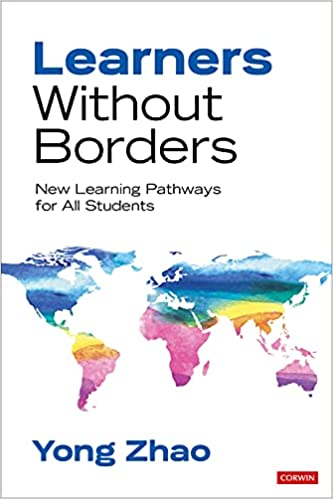




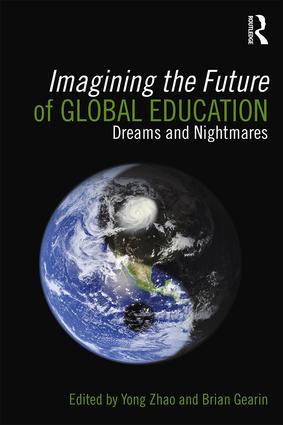
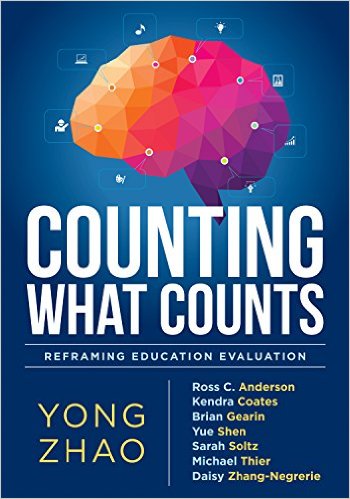


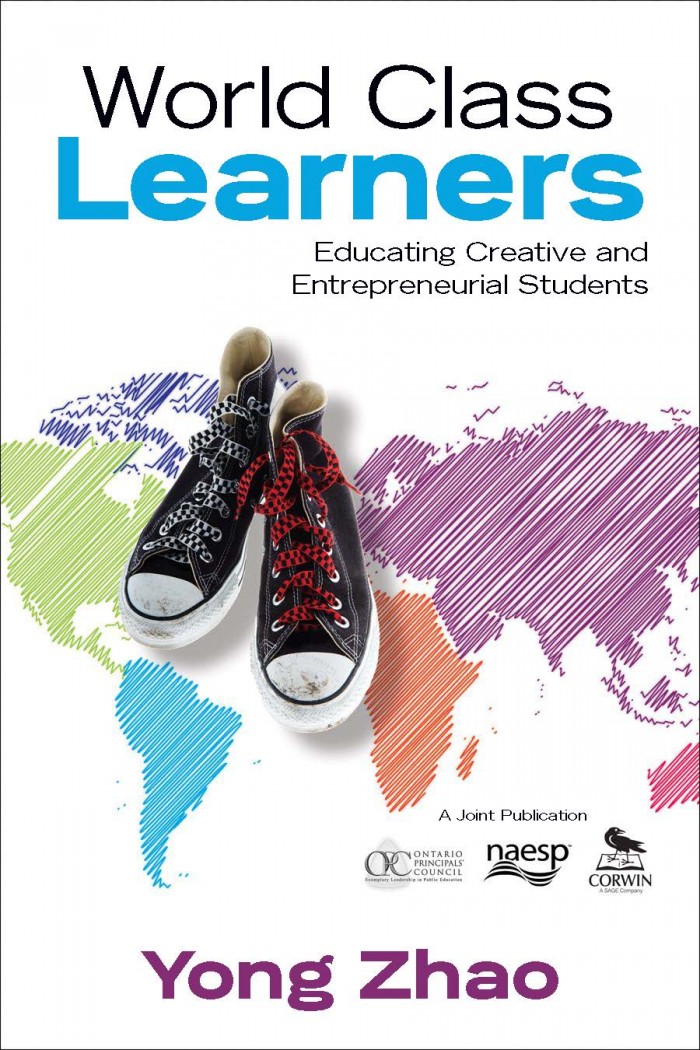


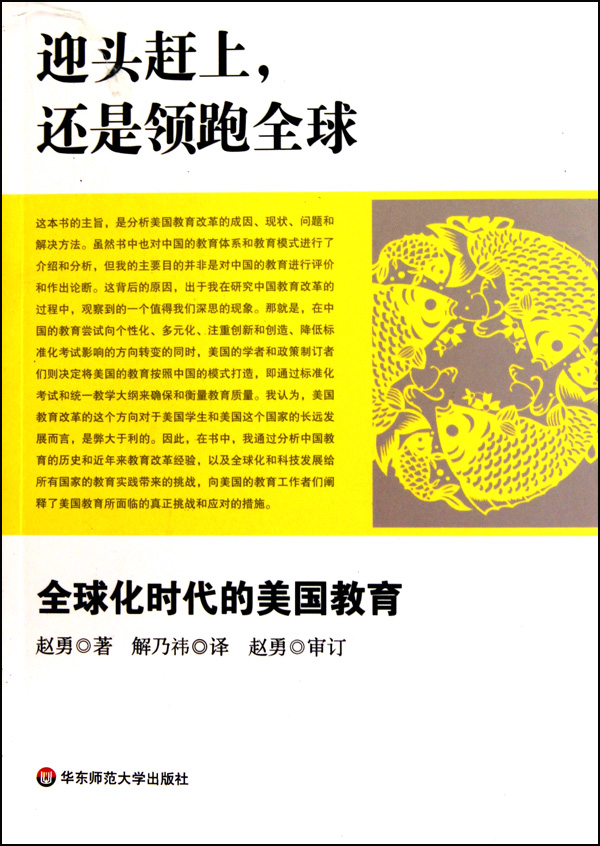










One of the great limiters of wise social policy is that humans are much more risk averse than opportunity oriented. This means that we are much more apt to stay with familiar failures like the factory schools model than we are to be bold enough to allow individualized curricula that every child deserves. In no small part because the failure we imagine might result seems much more vivid and terrifying than any equivalent-sized deviation in the opposite direction, which simply doesn’t have the visceral pull towards opportunity that fear exerts to keep the status quo in place.
Simply put, we staff schools with winners who enter adulthood under the current paradigm, often people for whom an original idea is terrifying, and then we wonder why they find change so terrifying and opportunity for new approaches so uninteresting.
[…] Wagner sees an economy in shambles and calls for innovators. Yong Zhao sees a nation at risk and calls for entrepreneurs. Tom Van der Ark sees competition and complexity and calls for project based […]
[…] Wagner sees an economy in shambles and calls for innovators. Yong Zhao sees a nation at risk and calls for entrepreneurs. Tom Van der Ark sees competition and complexity and calls for project based […]
[…] http://zhaolearning.com/2015/04/06/a-world-at-risk-an-imperative-for-a-paradigm-shift-to-cultivate-2… – This shows the massive paradoxical crises – there is Massive Youth Employment but a Massive Talent Shortage? […]
The Coming Prosperity How Entrepreneurs Are Transforming The Global…
[…] he progress of each student as well as institutions frequently, and other resour […]…
[…] article A World At Risk: An Imperative for a Paradigm Shift to Cultivate 21st Century Learners http://zhaolearning.com/2015/04/06/a-world-at-risk-an-imperative-for-a-paradigm-shift-to-cultivate-2… and shared quotes that resonated with their current […]
[…] consumed any educational literature I could get my hands on (Dweck, Guskey, Duckworth, R. Berger, Zhao, Wagner), as well as anything that might be remotely related to how people think and […]
Schools For The 21st Century Leadership Imperatives…
[…] hey are not necessarily good at preparing entrepreneurs because different paradi […]…